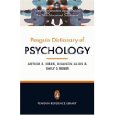Decisions and Problem-Solving
You can view any decision making as solving a problem - in fact any kind of thinking task could be called problem solving.
Traditionally, and especially in research and education, a problem has been defined in a much narrower way - as a set of circumstances in which there is only one 'right' answer.
For example, in intelligence tests or the mathematical problems typically set at school there is one correct response expected by the examiner and any other response is regarded as wrong - even if a plausible and logical explanation can be given for an alternative response.
In many respects this kind of problem solving is quite different from the 'real world' of business problems where even if there is a 'right' answer there is never a teacher to tell you what it is. In business the emphasis is on an answer which is:
- practical
- beneficial
- cost effective
- and so on
In other words there is no such thing in business as a right or wrong answer - simply what seems to be the best in the circumstances as they appear at the time.
Search for solutions - trial and error
It is not only the quality of a decision that matters but the range of possible solutions generated in the first place. Creativity, for instance, plays a significant role in providing these solutions.
This search for solutions is a fundamental part of problem-solving behaviour. Baron says that ' a problem arises when a person has a goal to achieve but does not know immediately how to achieve it.'
The simplest way of going about this search behaviour is trial and error. First of all you try one way, and if that doesn't work, you try another. Like getting to know your way around an unfamiliar town or the maze of corridors in a university or large office complex.
You could argue that all problem solving is trial and error of this sort because it involves:
- A SEARCH for possible SOLUTIONS
- EVIDENCE for whether or not it gets you anywhere near achieving your goals
- REJECTION of those possibilities that are seen to be ERRORS
This kind of approach assumes that the trial and error process is virtually random. In a situation such as, for example, the Hampton Court maze there is no evidence to give you any hint as to which is the best way to get out: a random choice is as good as any other.
Typically, this is also the case when you are entirely new to a situation like a new town or an unfamiliar building.
However, it is obvious that:
- This is not a very effective way to solve most problems simply because it will take too long check through all the possible options - as a practical method it is only of value when there is a very small range of alternatives.
- In many real life situations making a choice has consequences - it can cost money for instance to make a mistake in buying too much or too little stock.
- Trial and error involves no intelligence or creativity - we have evolved those intellectual abilities precisely because they lead to much more effective problem solving than trial and error.
- Lastly, of course, people just don't behave like that.
Taking the examples of a college or a new town, what happens in practice is that you soon build up a mental map of the layout or street pattern in your mind.
Instead of having to physically try out a route, you can do so in your head and only take a particular route after you have decided it is the best one. This kind of working out of a problem is a common method of achieving a solution in a deliberate fashion. You can go further by using external aids in the process - diagrams, maps and so : decision modelling in a very basic sense.
What is more interesting, however, is the way that you soon go even further than conscious mental trial and error into an unconscious way of deciding a route.
To explain this, you need to think of the conscious mental map you have learnt by walking around the town or college and then realising that you can actually fill in the gaps in the map by deduction. You might never have been into room C203 before but once you know, for example, where C200 is it does not need much in the way of genius to 'guess' where 203 might be.
Moreover, you would probably have got there without using anything like a map inside your conscious mind. Once you have become sufficiently familiar with a layout, the map becomes internalised within your unconscious mind and you move around without apparent reference to it. The solution to your problem of where is C203 just 'pops' into your head. When this happens for the first time in a problem solving situation we call it INSIGHT.
A further interesting feature of this process is that it can take a considerable amount of time to happen.
How many times have you spent a long time thinking about a problem, perhaps worrying over a possible solution without any success. Then some time later, maybe hours or even days, at a time when you are not even thinking about the problem - lo and behold, the answer pops into your head as if from nowhere.
More Psychology articles

Fundamentals of Psychology

Psychology
